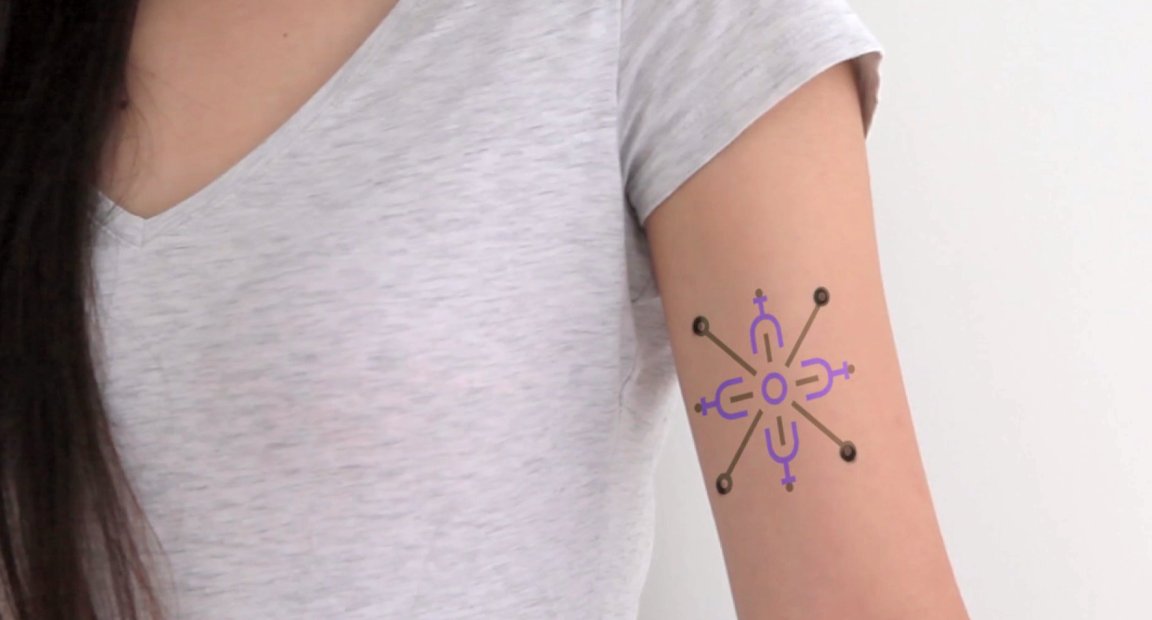
The Tattoo Test
Researchers from Massachusetts Institute of Technology (MIT) and Harvard Medical School have developed a tattoo ink that could provide real-time updates on the body’s health. By making ink that responds to interstitial fluid — the liquid in which our cells are suspended — the researchers have found a unique way to monitor blood glucose, sodium, and ph levels.
The idea of the DermalAbyss project is that an individual would have the ink tattooed onto their body in the pattern of their preference. The tattoo would then change color according to the amount of the activating agent present. A tattoo using the ink designed to respond to glucose levels, for example, would change color from blue to brown as the person’s blood sugar level rises.
A Medical Skin Interface
The technology is an ingenious interaction of the body-art, medical, and bio-sensor sectors. While the researchers have no immediate plans to release their ink to the public, the potential of the project is huge, and others could possibly explore and expand upon it in the future.
Aside from the initial tattooing process, the researchers’ skin interfaces are non-invasive, unlike the methods currently used to monitor diabetes. They’re also much harder to damage than current wearable technology.
That means the tech could improve millions of lives in the United States alone by helping the 10 percent of the population with diabetes more easily monitor their disease.
As stated on the project website, the technology could potentially be used to measure far more than just the levels tested in the study: “It could be used for applications in [continuous] monitoring, such as medical diagnostics, quantified self, and data encoding in the body.”
This isn’t the only research exploring innovative uses of tattoos — others have found ways to link body ink to sound files or use it to control smartphones — but this research is the first to explicitly explore the medical possibilities of inked biosensors. Though just a proof of concept right now, DermalAbyss could be offering us a glimpse into the future of health monitoring.